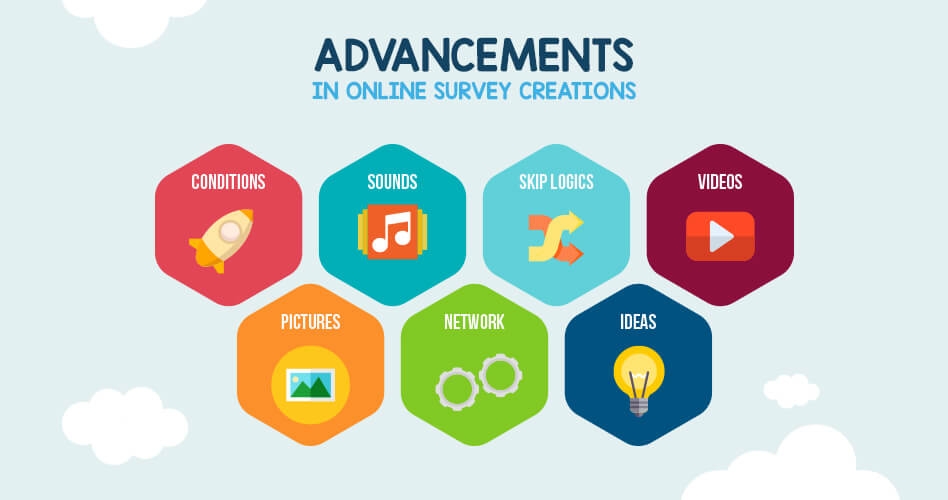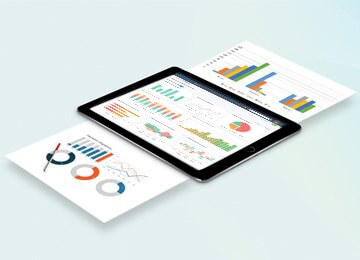The purpose of an online survey is to enable a business, person or organization, to gather information about a desired target market, group or demographic. This involves creating a survey that satisfies a number of criteria’s in order to achieve the most accurate results, including:
- A clear definition of the business goals and how the survey supports those goals.
- Understanding what the information will be used for.
- Asking questions that are relevant to the business goals.
- Surveying respondents that fit within the desired group or target market (this could be pre-selected respondents such as company employees, a panel, customers who have used your product or service before etc).
- A rigorous testing, revising and editing process, undertaken prior to launching the survey.
- Establishing accurate methods for analyzing, reviewing and reporting data.
- And most importantly, acting upon the data and information received.
These are just some of the many components and processes that should be considered when creating an online survey. This article will provide a general overview on what makes a good survey, along with basic tips on testing your survey and analyzing the results afterwards. First, let’s start with….
Establish business goals
Business goals allow a company or organization to have a clear vision of where they want to go, whether it be short-term or long-term achievements. This may include increasing sales forecast, developing brand etiquette, improving customer/employee satisfaction or introducing new products and services to the market. The important thing to remember is that business goals are usually intangible, they’re designed to introduce a goal that can be acted upon through a series of measurable objectives. An example of this could be:
‘Our goal is to gauge public perception towards a proposed brand re-imaging Objective: Assess the customer-base through surveying and testing, by presenting concept images and analyzing their feedback.
Depending on the business goals that are established, this will dictate the kind of questions that you ask and how the survey is structured. For some surveys, long-answer responses will be required to acquire detailed information, while others will benefit more from multiple-choice or short-answer responses. Understanding the business goals and objectives required to achieve those goals, will greatly assist in creating a survey that achieves the results you need.
Provide relevant questions
Coming up with good questions for your survey is important if you want to receive responses that are relevant to the business goals. When devising questions, keep in mind the business goals and objectives required to achieve those goals, so as not to lose direction during the process.
Understanding the different types of questions associated with surveys is also important to remember. Questions such as age, location and date of birth are typically asked through dropdown lists (in the case of date of birth, a dropdown calendar), while questions regarding the quality of customer service may implement a Likert scale ranging from ‘strongly negative’ to ‘strongly positive.’ Carefully analyze the questions you’re asking and decide which method of response is most suitable for them.
Good survey questions should be as unbiased and objective as possible, without the risk of persuading a hidden agenda or forcing a certain way of thinking. Objective questions that help reach the prescribed business goals, will provide a realistic overview of how an organization, service or product is perceived by the respondents. A survey that ignores or sugarcoats potential flaws is a disservice to the investment and effort made by those who created the survey, which will return results that do not accurately represent the company, product or service.
Take note of question structure and balance too. This means having a balanced amount of question types throughout the entire survey, ranging from multiple choice, short answer and long answer responses. An overabundance of one question type may result in fatigue and frustration among respondents, as they will grow tired of writing long-answer responses, or become bored with multiple-choice questions and begin to rush through them. This produces inaccurate results and undermines the entire survey process, which can be avoided through careful planning and consideration for the respondents.
Understand the respondents
The goal of the survey heavily dictates who the respondents will be. If you’re a company looking to assess the current mood or attitude of staff, then the employees will be your main focus group. If you’re launching a new line of toys aimed at children 5 years and under, then you’ll be asking parents and children on their opinion of the product.
Think about the desired demographic for your survey and what their wants/needs are. Factors such as age, gender, income, location, education and occupation, all play a huge part in developing your survey, along with understanding what challenges they face and the typical problems they encounter. Whether it’s a person’s attitude, lifestyle, hobbies and interests, or general behavior; all of these aspects influence the decision to invest in a product or service.
Understanding the kind of action you want respondents to take is very important to remember. Do you want them to buy? Donate to a charity or good cause? Volunteer their time? Establish what kind of response you wish for your target market to make and decide whether your questions match that desired action.
When deciding upon the type of respondents you wish to attract, consider the kinds of media they interact with. If you’re developing an online survey, think about the most effective way to introduce the survey to people, whether it be through social media, e-mail or through association with a website they regularly visit. For more traditional surveys, consider aspects including location and execution, whether it be through letterbox drops, one-on-one surveys at shopping centers or other viable avenues.
Optimize your survey length
Typically speaking, shorter surveys are more desirable for respondents, as they reduce the risk of people dropping out midway. However, if your survey demands considerable time and lengthy responses, there are ways to manage this issue.
For online surveys, providing a progress status is a great way to allow respondents to monitor their time and accurately gauge when the survey will be finished. This may be achieved through implementing a percentile figure or represented through a progress bar.
For lengthier surveys, provide respondents with an estimated time figure that outlines how long the survey will take to complete. This allows respondents to decide whether they wish to begin the survey or not, based on those conditions. While this may result in dropouts early on in the process, those participating in the survey will be less likely to leave it unfinished.
The length of a survey relates to two important factors; the amount of questions being asked and how long it takes for respondents to answer those questions. These concepts correlate with each other in several interesting ways. Typically speaking, respondents will spend less time on each question when it comes to longer surveys, and will spend more time per question for shorter surveys.
The risk of producing lengthy surveys is that respondents may begin to rush their answers if they start feeling fatigued during the process. Even worse, respondents may opt out of completing the survey if they feel the process is unnecessarily long. Progress bars may help with this problem, however, it should not compensate for a survey that is unnecessarily long.
In order to gauge the overall length of your survey, test it out on willing participants (people who weren’t involved in developing the survey) and listen to their feedback closely. Act upon the response of participants and condense accordingly to make the process less time-consuming for for them.
Use clear and simple language
A good survey is one that is easily accessible to participants, with clear and simple language. When asking questions and presenting concepts to people, avoid using industry-specific language unless the survey demands it, or if it’s relevant to a specific target market.
Don’t make assumptions when devising questions either. This may occur when asking a question regarding your own company, without actually explaining what your company does first! Another example of this could be when referring to a competing business; don’t assume that every respondent will know what they do either (unless your target market is very specific or niche).
Remember to avoid presenting multiple ideas within the one question, unless the method of response suits the situation (this would most commonly suit a long-answer style of response, as opposed to multiple-choice). This can lead to confusion and frustration, with the potential for respondents to prematurely end the survey. To solve this problem, simply break up the question into two separate questions, in order to achieve the most accurate responses.
When possible, be sure to provide multi-language options when developing a survey, along with ensuring that each question translates the same meaning across several languages.
Test before you launch!
One of the most crucial aspects regarding surveys is testing it first, before releasing it to the public. The most effective way to pre-test a survey is to conduct it in the same manner you would if the survey was finished. Present the survey to willing participants, whether it be friends, colleagues or family members (as long as they weren’t involved in the survey creation process) and allow them to complete the survey uninterrupted. Once they have finished, let the respondents provide feedback and ask questions about the survey; take note of all feedback you receive and act upon them accordingly.
Undergoing this process is time-consuming, however, it will reveal potential errors in your survey. This may include poor grammar, inconsistencies in language, overly-technical phrasing, inappropriate response methods or exceedingly lengthy completion times.
Take the time to revise any areas that require improvement and repeat the testing process again, until a consistent level of satisfaction has been reached with all respondents. With each new adjustment that is made to the survey, the potential for new problems to arise exists; never assume that a revised survey is automatically better than the last one. Be sure to test the survey with each new revision that is made.
Use proper data analyzing and reporting techniques
When it comes time to collect your data and information, you’ll need to assess the value of your responses and decide how to organize everything. Many online survey services provide an array of analyzing tools, which lets you customize how your information is presented. This may include representing data through pie graphs, charts, tables and text descriptions.
The type of questions asked will heavily dictate how that data is represented. In the case of categorical responses, a nominal scale may be used to represent different categories or classifications. This is commonly used in the event of dropdown list responses such as age groups (eg 21-24 or 25-32) or annual income/earnings questions (eg $25,000 – $50,000 or $55,000 and above).
In regards to multiple-choice questions, use reporting values to categorize responses in a hierarchal manner, based on preferences that are relevant to the business goals. This is typically used in a Likert scale style of response, where a numerical value (hidden to the respondents) is applied based on its importance. For example, in the event where a ‘neutral’ response is less important than ‘strongly satisfied’ or ‘strongly dissatisfied,’ you would place a higher reporting value on the two opposing responses.
Take action upon your findings
Once you have compiled all your data and reported them accordingly, it is time to reflect on your feedback and decide what to do next. A survey that produces negative results regarding customer service will require a re-evaluation of work practices and staff training. In the event of positive feedback, reflect on methods that currently work and how they can continue to be successful.
It is important to take action after completing a survey, as it displays effort and loyalty to your staff or customers. Constructive feedback that reflects your business goals allow you to evaluate and improve upon existing methods, in order to deliver better products or services in the near future. Utilize this valuable information available to you and use it to your advantage.







